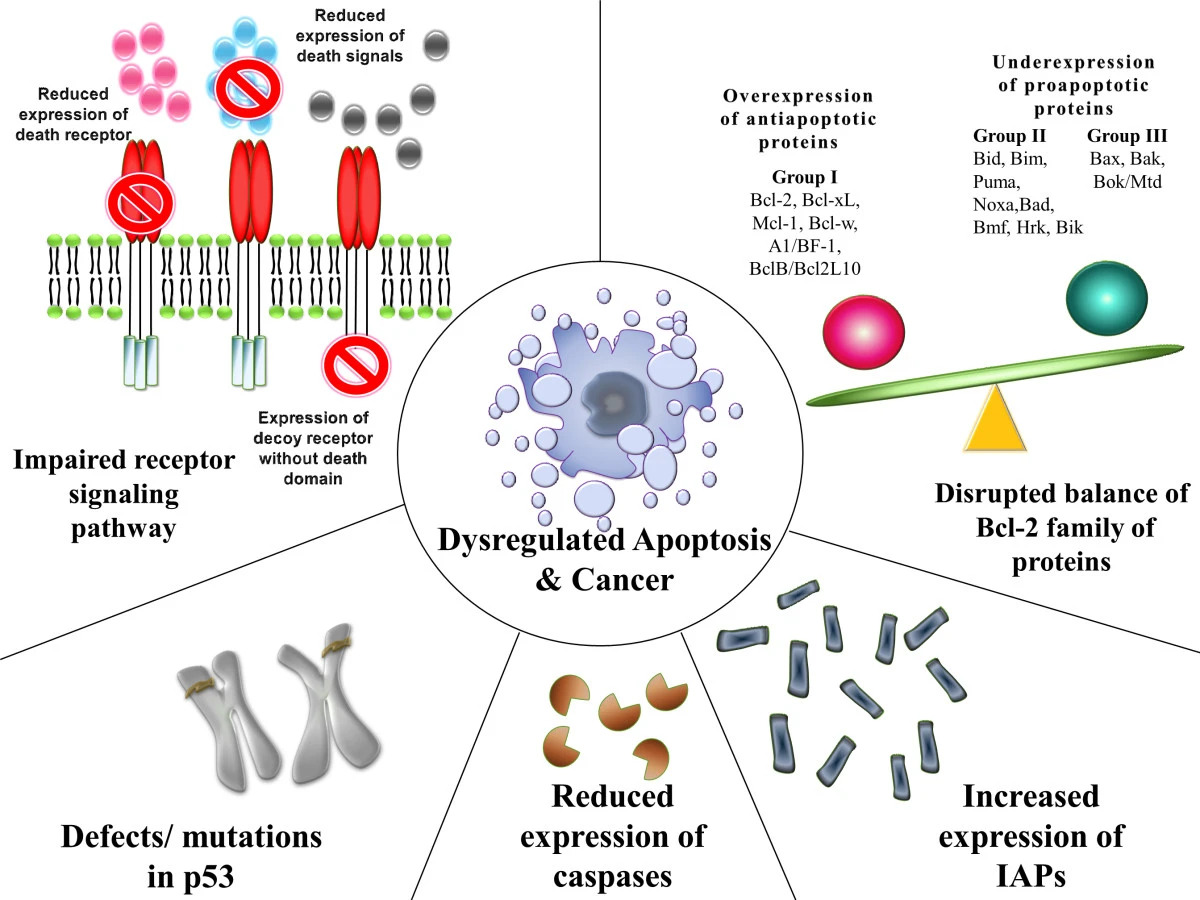Playlist
Show Playlist
Hide Playlist
Ultraviolet Radiation: Excision Repair & Carcinogen – Carcinogenesis
-
Slides Carcinogenesis Basic Principles.pdf
-
Download Lecture Overview
00:01 Radiation is actually a big deal. Here, say that your patient has a DNA repair issue. 00:10 And it produces pyramidine dimers leading to transcriptional errors and mutations of oncogene. In other words, we'll talk about this. I'll show you a picture coming up where the thymine dimers remain within your DNA. 00:25 Thymine dimers or dimers normally should be removed by excision type of enzymes. 00:31 But in a condition known as xeroderma pigmentosa in which the excision repair genes have been damaged. 00:39 The thymine dimers remain within the DNA. Upon exposure, to UVB rays, which are the dangerous type of ultraviolet rays, the patient may then develop any type of skin cancer with xeroderma pigmentosa. What do you mean by any type? Three major types. A melanoma perhaps. 01:00 A squamous cell cancer of the skin perhaps, or even basal cell carcinoma. Be careful. Here we have an issue with our DNA repair gene. 01:10 It is a nucleotide excision repair pathway which has been, k/o means knocked out. 01:18 So what's a recessive inherited disease that we are talking about here in which the nucleotide excision repair genes has been knocked out. 01:26 Xeroderma Pigmentosa. What happens? Here is a thymine dimer. You should have an endonuclease which comes in and this is normal. 01:37 It should repair it. And upon repair, you then have ligases, that move in a 5' to 3' polymerase activity. 01:46 Therefore, that which has been excised, has now been rejoined by ligase. Guess what happens in xeroderma pigmentosa. 01:54 It does'nt occur. These repair enzymes are mutated. They are not present. So therefore, the thymine dimers will remain within the DNA. Now what's next? The patient has now been exposed with UVB rays. 02:10 Wow. Further mutations take place, developing cancer. Other carcinogens that you need to know for sure. 02:21 Non-ionizing radiation may result in malignant melanoma. May result in basal cell carcinoma. 02:29 What you are seing here in this picture, is by the eye. A corner of the eye, with a basal cell carcinoma. 02:36 I want you to take a look at the characteristic of a basal cell carcinoma. I want you to begin the process of reinforcement now. 02:44 If this is the first time that you have ever seen basal cell carcinoma, you'll notice there is a central crater here. 02:52 It looks like a volcano. The basal cells have been affected in the skin here. Non-ionizing type of radiation. 03:01 It's a malignant tumor. It will almost never metastasize. Interesting enough, when I set up the foundation for you, when I talked to you about benign, what did I tell you about size of that tumor? Small. Here is an exception. 03:20 Basal cell carcinoma, you let this linger it gets bigger, bigger, bigger. Does it metastasize? Almost never. 03:29 But it does'nt mean it does'nt destroy the face. It will. Completely disfigures the face. 03:36 If you've ever seen elderly patient with basal cell carcinoma upon exposure to UV ray, it can be pretty nasty. 03:43 Keep that in mind. Aggresive. Third degree burns. Now, pay attention here. Your patient, suffered a third degree burn, and resulted in a cancer? Yeah. There could be so much physical trauma that with enough irritation, that could be enough of a mutation and irritation, in which the patient now develops cancer of that particular organ. 04:11 Not only could you have your third degree burns giving rise to squamous cell cancer of the skin, which is really seriously unbelievable isn't it. But, what if the patient has osteomyelitis, if immunocompetent maybe Staph. 04:29 If you have something like sickle cell disease maybe Salmonella osteomyelitis. Or you stepped on a nail and Pseudomonas got in. That's a bone infection. And what's that bone infection it's going to then drill a sinus into the bone. A sinus within the bone is draining. And that draining sinus may then develop, unbelieveably, squamous cell cancer of the sinus. Actual physical trauma with enough persistant irritation may result in cancer.
About the Lecture
The lecture Ultraviolet Radiation: Excision Repair & Carcinogen – Carcinogenesis by Carlo Raj, MD is from the course Cellular Pathology: Basic Principles with Carlo Raj.
Included Quiz Questions
What happens in patients with xeroderma pigmentosum who cannot repair skin damage caused by UVB light?
- Thymine dimers that are not repaired and cause further damage and mutation.
- The upregulation of the nucleoside excision repair pathway.
- The stabilization of squamous DNA sequences.
- Oncogenes and tumor suppressor genes act as excision molecules to repair the damage.
- A lower instance of basal cell carcinoma and melanoma.
Which of the following enzymes is responsible for excising thymine dimers?
- Endonuclease
- Reverse transcriptase
- Polymerase
- Ligase
- Dimerase
Which of the following statements about basal cell carcinomas is TRUE?
- They generally do not metastasize.
- They are not seen in patients with xeroderma pigmentosum.
- They are precursor tumors for malignant melanoma.
- They are associated with third-degree burns.
- They produce small tumors with extra-site growth.
Customer reviews
5,0 of 5 stars
| 5 Stars |
|
1 |
| 4 Stars |
|
0 |
| 3 Stars |
|
0 |
| 2 Stars |
|
0 |
| 1 Star |
|
0 |
Great explanation, It's great how the lecturer takes the time to guide our mental process. He´s so far my favorite lecturer.




